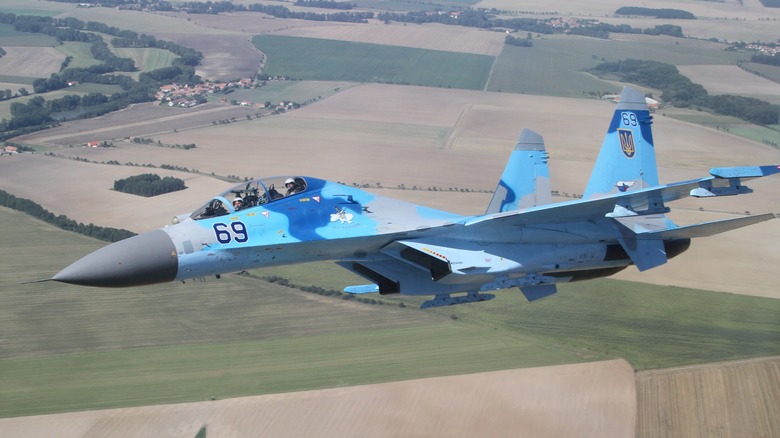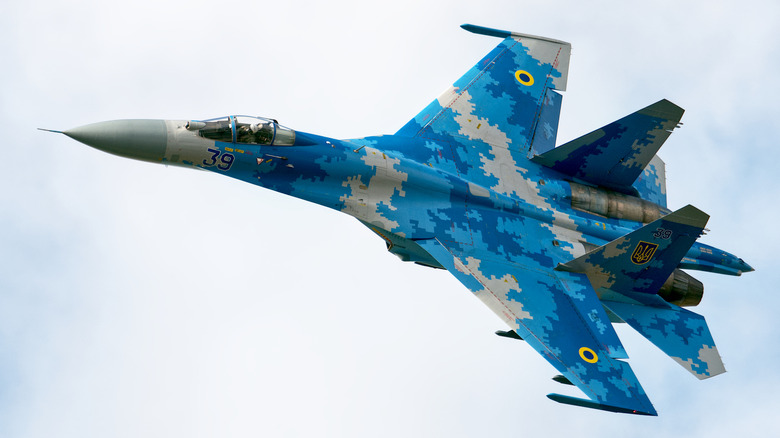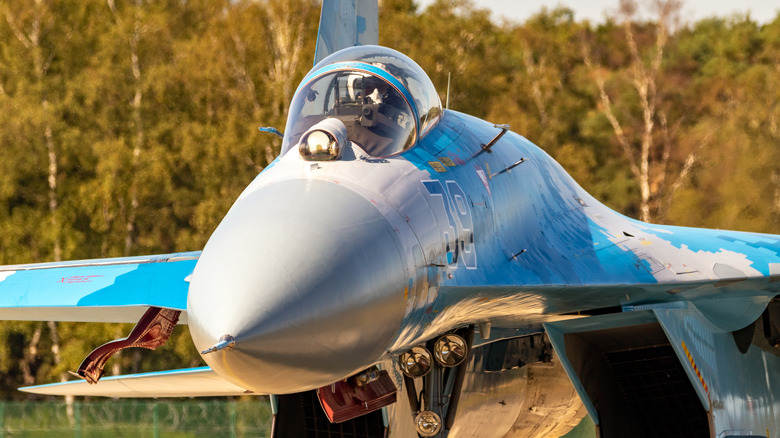Sukhoi Su-27: The Peak Of Soviet Aeronautical Design
Early in the 1950s, with global tensions rising, the United States set about reinforcing both its arsenal of weapons and its repertoire of military vehicles. This era saw the birth of, among many other weapons, the AIM-4F Super Falcon and the Air-2A Genie Rocket — both of which were developed for air-to-air use.
In the wake of World War II, it was clear that a strong air force was an invaluable, crucial weapon. As the Cold War set in, then, aircraft had to be prepared for what was (potentially) coming. As such, that's where jet-propelled fighters saw the most technological innovation, leading into the modern air forces of the world seen today
It is perhaps in aircraft that we see some of humanity's most astonishing technological leaps. Above all, in fighter jets; which push the boundaries in terms of how far, how fast, and how high airplanes can fly. The Sukhoi Su-27, developed by the Soviet Union, was just one unique model of fighter jet that accomplished incredible things.
The Su-27 aircraft has a long history, and continues to be deployed today. Let's take a look at exactly what it's capable of, when it was created, and what the future may hold for this formidable fighter.
Development of the Soviet fighter jet
The Cold War was a time when maneuvering and swiftness of response was absolutely key. The period of time between the 1950s and early 1990s drove worldwide militarization as a method of ensuring that military technology didn't need to be used. Nations were making sure that their own technology was more than a match for that of other nations that were perceived as potential threats.
The United States' F-15A, which debuted early in the 1970s, was just such a potential threat to the Soviet Union. The latter required a star jet fighter of its own, which was how the Su-27 project began in 1969.
Toppling the Eagle, of course, was a formidable challenge, and the Su-27 project was anything but a smooth ride. It wasn't until 1985 that it entered service. In fact, Smithsonian Magazine quotes project lead Mikhail Simonov as saying that "just the tires and the pilot's seat" remained, when almost a decade's work on the aircraft was deemed unworthy and left on the aviation cutting room floor. After rebooting development in 1977, all the toil was more than worth it, as the resulting aircraft was a powerhouse indeed.
The Su-27 as we know it today is a fighter that deftly balances firepower and versatility with maneuverability and speed — a formidable package that is perfectly summarized in its NATO designation: "Flanker."
What the Su-27 has up its sleeve
Offensively, the aircraft has a wide and varied arsenal. From RBK cluster bombs to a GSh-301 gun and R-73E missiles, it can adapt to and engage a range of targets. Among the world's speediest fighter jets, it certainly has the pace it needs to get itself into optimal position to use its arsenal, too: The Su-27 is capable of reaching 2,280 kph, and boasts a range of 3,680 km.
As the years went on, the Su-27 was further enhanced and iterated upon. The Russian Air Force's Su-27SM, introduced in 2003, was modified with an improved radar and general systems functionality, along with additional weaponry fitment. Ukraine's Antonov, meanwhile, modified the nation's fleet of Su-27s with similar instrument boosts, dubbing this version the Su-27M1.
In Russia, implementation of the Su-35 in place of the older model began in 2014. There's no doubt, though, that whether or not the Su-27 is phased out wherever it's used (Indonesia, India, and Vietnam being among the nations that field it), the Flanker remains a potent and unpredictable weapon befitting of its codename.


